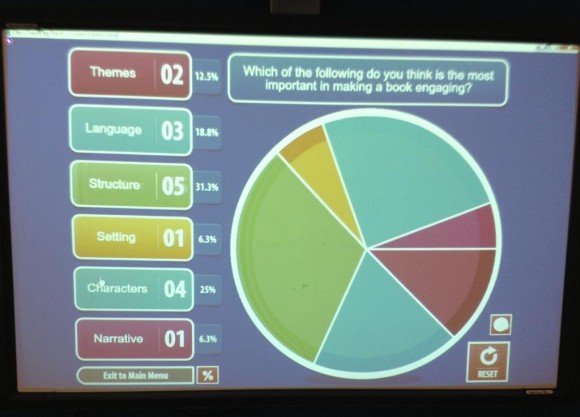…comes together.
(Doo do do doooh, doo doo doooooh….)
Take one regular lesson, on a regular Thursday, on a regular topic. Add a little Triptico magic, some fantastic, thoughtful, precise and quick witted questioning from a adventurous teacher and bam – there you have it, an Outstanding ‘lesson opening.’ Yes, it really is that easy doable? Doable? Not exactly blogging of the highest order there, not exactly David Didau, Tom Bennett , Alex Quigley, (no preference order fellas) anyway, but ‘doable’ really is the most suitable adjective. Not just doable, but time efficient too. Impact on your lesson introduction in the time it takes to write a multiple vote question with one question guaranteeing you at least five minutes student engagement and interaction or your Triptico licence fee back!
Like David muses, Outstanding is not some mythical, esoteric and fleeting high point in one’s teaching week, it is summation of the many things we do, to make our teaching strong. It is the ‘knowledge of our students and the relationships we’ve lovingly established over months or years. It’s the routines we’ve set up and the massively high expectations we’ve communicated.’ And yet, before some can be established, can be routine, it must first be attempted. So – how does one re-bake this Outstanding opening.
Step one – download Triptico and select Class Count, another-free-resource from David Riley.
Step two – write an open ended question / vote with more than one right answer. The impact of many options and rights answers is to be explored. A pedagogy research project that I will be asking Mr Elliot to investigate and present back to the English dept. Of course you could write a closed question, I’m not against close questions and assess prior learning.
Step 3 – consider the possible answers in advance, prepare phase two questions ready for deployment.
Step 4 – invite the students to vote as they enter the class. (As I have been asked – tapping the IWB as they come in)
Step 5 – hold court. Ask more questions. Ask which students voted for which answer. Students have to engage or the number of respondents does not match the scores on the board. Numeracy pops its head in as Class Count can convert to percentages if you click the icon (nice work David). Deploy the follow up questions.
You answered ‘Language,’ (Student X). Why did you not answer ‘Structure,’ afterall it seems to be more popular?
Who voted for ‘Character?’ Explain why that stood out for you?
Did I miss any options?
What was most impressive was Mr Elliot facilitation and guidance of a debate between two students who have voted differently, but didn’t quite have the skills to debate their preferences themselves. Skillfully guiding the students through to a mutual and respectful, disagreement.
Why might you think that is Chloe?’
Can you see why Amanda did not vote ‘Character’ like you did Chloe.
I would have been pride of that achievement.
Now I do not know how it ended, but I am hoping it went something like…
We are about to have a look at ‘Themes’ in the book Heroes – I wonder how the vote will stack up at the end of the lesson?
If you are going to complain and position that I should have stayed longer before loosely chucking the ‘O’ word around, you may be right, but for now, I am grading those ten minutes as Outstanding. Students were engaged, every student took part (so no, the question could not be differentiated). The Class Counter question was open, and required both analysis and prioritising skills before the students could answer (and that did cause a bit of a bottle neck), with the follow up questions both probing and challenging. Learning was rapid fuelled by controversey and wanting to prove oneself more right than the next student.
Disclosure
We are very lucky, at The Wellington Academy every classroom has an IWB. Ironically, Triptico (free) and Triptico Plus, only a few quid, really makes the most of them.
[qr_code_display]




